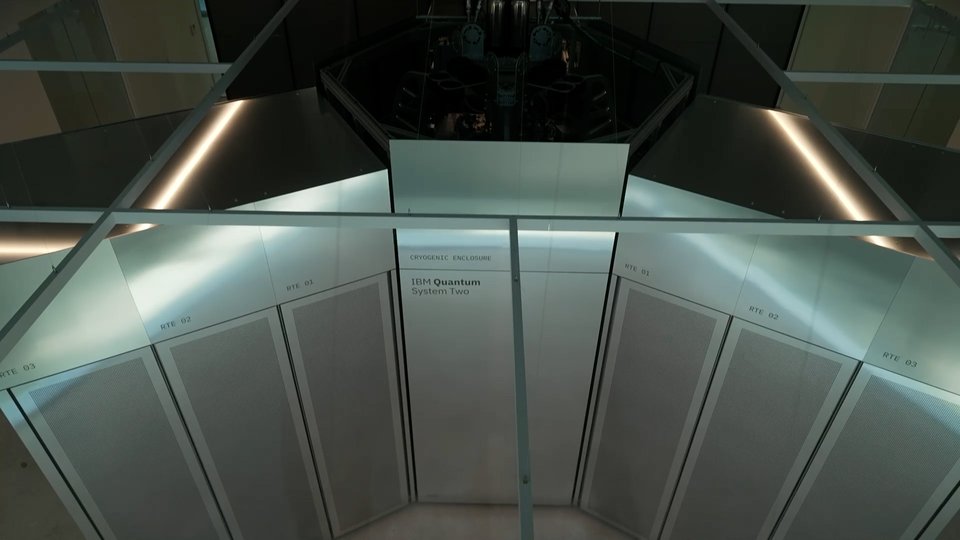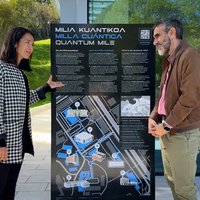A new tool for analysing communications on trains
It has only been a few months since the tram began to circulate in the streets of Vitoria. Since then, hundreds of thousands of people have used the new transport in their daily journeys. According to the first balances, the punctuality of the tram has
been 95%. To achieve these results, all systems must operate with precision, which is not easy to achieve. Trains are supplied by many producers and maintenance is often long and laborious. The new train communication analyser jointly developed by
Mondragon University and Traintic will greatly facilitate these tasks. At the request of Teknopolis,
Mikel Mendikute, Ania García de Salazar and Aitor Belarusian went to Vitoria-Gasteiz to show how a new railway application works. Mondragon Unibertsitateak eta Traintic enpresak elkarlanean garatu dute trenetako komunikazio-analizagailua. Mikel Mendikute is a teacher and students who participated in the development of the analyzer Aitor Bela and Ania Garcia de Salazar, both currently employees of Traintic.
In trains there are many devices: sensors, interfaces... and all of them must work with great precision in order for trains to work properly. Not only must it work, but all devices must be in communication with each other. These communications are guaranteed by the communication
bus. AITOR BELA; TRAINTIC-MONDRAGON UNIVERSITY: It is this blue cable: the entire train connects to this bus, through which all the information that goes on the train in real time passes. Data for control and monitoring is sent over this bus. The
analysis tasks of the communication bus have hitherto been very laborious. Although it was known that there was a problem, knowing the exact origin of the problem could not only be a task of long hours, but also of days. In addition, it is difficult to physically access the
devices. MIKEL MENDIKUTE; MONDRAGON UNIVERSITY: The main problem for companies like Traintic was that they had to buy the tools to perform these analyses. They bought them at a very expensive price and also with very bad results. In the end, these tools don’t let you know what was happening on the train without stopping the train. What we proposed then was to make a new product using the electronic technology that we now have and surpassing all the limitations that others had. The result
of a year of work has been the intelligent purification and diagnosis system for communication buses developed by Mondragon University and Traintic. The development of the bus analyzer has required the work of many people.
MIKEL MENDIKUTE; MONDRAGON UNIVERSITY: We worked there with four teachers from the school, four students from the fields of telecommunications and computer science and three engineers from
Traintic. The work was also complex.
The work involved a wide variety of disciplines, and the work was very hard and very large. Finally, we have developed a new product in a year, a product that is nowhere else in the world.
The developed system consists of two main elements. One is hardware or physical support. The physical support is physically connected to the train communication bus.
AITOR BELA; TRAINTIC-MONDRAGON UNIVERSITY: This platform will do all the work for us by receiving information from the train and sending it to the computer and we will see on the computer at all times what data we are sending on the train.The main features of this platform are: high data processing capacity, because it processes data in real time, then the ability to store all this data in memory, and finally the high-speed interface that it has to send to the computer. The
second element of the bus analyzer is software or graphical application. The hardware sends the received information over ethernet to the computer.The graphic application visually explains the state of the systems. If there was a problem, it would appear in red on the screen.
AITOR BELA; TRAINTIC-MONDRAGON UNIVERSITY: Through this application the maintenance person can know which device is in error, and since he or she knows in advance what type of devices are in the train, he or she can go directly to that device to solve the problem. Although new, the bus analyzer has
already begun to be used for maintenance of various railway services. In Teknopolis, we had the opportunity to try it on the Vitoria tram.
AITOR BELA; TRAINTIC-MONDRAGON UNIVERSITY: When there's a problem, we come to the tram and what we do is put our wiring on the communications bus. To do this, we need to get into an existing communications device. In this case, we are entering a communication device that repeats the signal, and we would insert our cable at that point. Once linked to
the train communication channel, what is done is to see how the signals are in the application. And here we can see what problem is happening on the train at the moment, interpreting the whole form of the signal and the data that it brings. At the moment we don’t see any problems, so the tram is about to start.
Buletina
Bidali zure helbide elektronikoa eta jaso asteroko buletina zure sarrera-ontzian










